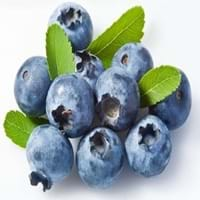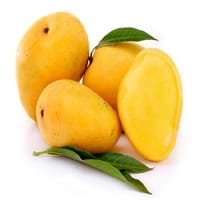Health Benefits
Cancer prevention, Cures gastro-intestinal troubles, Improves night vision, Improves stomach health, Prevents diabetes, Prevents high blood pressure, Reduces blood circulation problems
Cancer prevention, Cures fatigue, Heart care, Prevents strokes
General Benefits
Fights against infections, Helps in weight loss, Prevents blood clotting in vessels, Treatment of urinary tract infections
Anti oxidant properties, Boosts immune system, Controls blood pressure, Digestive aid, Improves eye vision, Maintains healthy cholesterol level
Skin Benefits
Anti-aging benefits, Nourishes skin, Protects against skin damage
Anti-aging benefits, Brightens and lightens complexion, Skin cleansing, Skin rejuvenation, Treatment of acne, Treatment of blackheads, Treatment of dark spots
Hair Benefits
Prevents hair loss
Good conditioner, Prevents hair loss, Treatment of dandruff
Allergy Symptoms
Not Available
Abdominal pains, Breathing difficulty, Diarrhea, Runny nose, Sneezing, Swelling of mouth, tongue or lips, Watery eyes
Side Effects
Decrease in blood sugar levels, Diarrhoea, Dizziness, Headache, Internal bleeding, Stomach pain
Increase in blood sugar level, Diarrhoea, Weight gain
Best Time to Eat
As a snack in the late afternoon, Don't consume at night and before bed, Eat the fresh ones, avoid mixing with any other foods, don't eat after meal., Morning time (before lunch)
Don't consume at night and before bed, Eat the fresh ones, avoid mixing with any other foods, don't eat after meal., Morning time (before lunch)
Vitamin B5 (Pantothenic Acid)
Vitamin C (Ascorbic Acid)
Vitamin K (Phyllochinone)
Calories in Fresh Fruit with Peel
Not Available
Calories in Fresh Fruit without Peel
Not Available
Calories in Frozen Form
Not Available
Calories in Dried Form
Not Available
Calories in Canned Form
Not Available
Season
Summer
Spring, Summer
Varieties
Dwarf bilberry, Piper, bog blueberry, Northern bilberry, Mountain bilberry and Oval-leaved bilberry
Alphonso, Valencia Pride, Badami, Chaunsa, Nam Dok Mai, Glenn, Sindhri, Madame Francique, Kesar and Keitt
Color
Dark purple
Orange, Red, Yellow
Inside Color
Light Green
Yellow
Origin
Unknown
Southern Asia
Soil Type
Moist, Well-aerated
Clay, Loam, Sand
Climatic Conditions
Cold
Humid, Warm to hot climate
Facts about
- Bilberries are used in manufacturing of alcoholic drinks.
- They are used to improve aromas of sorbets.
- The green extract of it's leaves is used in textile industry as natural dye.
- A mango tree can bear fruits even after the age of 300 years.
- Height of a mango tree can be as high as 100 feet.
- In India, mango is known as a symbol of love. Also, a mango basket is considered as the sign of friendship.
Other Countries
Denmark, Finland, Iceland, Sweden
Bangladesh, Brazil, China, Indonesia, Mexico, Nigeria, Pakistan, Philippines, Thailand
Top Importer
United States of America
United States of America
Top Exporter
Chile
Mexico
Botanical Name
Vaccinium myrtillus
Mangifera Indica
Synonym
blaeberry, whinberry, European blueberry, whortleberry
Not Available
Subkingdom
Tracheobionta
Tracheobionta
Division
Magnoliophyta
Magnoliophyta
Class
Magnoliopsida
Magnoliopsida
Subclass
Dillenhidae
Rosidae
Order
Ericales
Sapindales
Family
Ericaceae
Anacardiaceae
Genus
Vaccinium
Mangifera
Species
Vaccinium myrtillus
M. indica
Generic Group
Heath
Cashew
Difference Between Bilberry and Mango
We might think that Bilberry and Mango are similar with respect to nutritional value and health benefits. But the nutrient content of both fruits is different. Bilberry and Mango Facts such as their taste, shape, color, and size are also distinct. The difference between Bilberry and Mango is explained here.
The amount of calories in 100 gm of fresh Bilberry and Mango with peel is 44.00 kcal and Not Available and the amount of calories without peel is Not Available and 60.00 kcal respectively. Thus, Bilberry and Mango belong to and category.These fruits might or might not differ with respect to their scientific classification. The order of Bilberry and Mango is Ericales and Sapindales respectively. Bilberry belongs to Ericaceae family and Mango belongs to Anacardiaceae family. Bilberry belongs to Vaccinium genus of Vaccinium myrtillus species and Mango belongs to Mangifera genus of M. indica species. Beings plants, both fruits belong to Plantae Kingdom.









